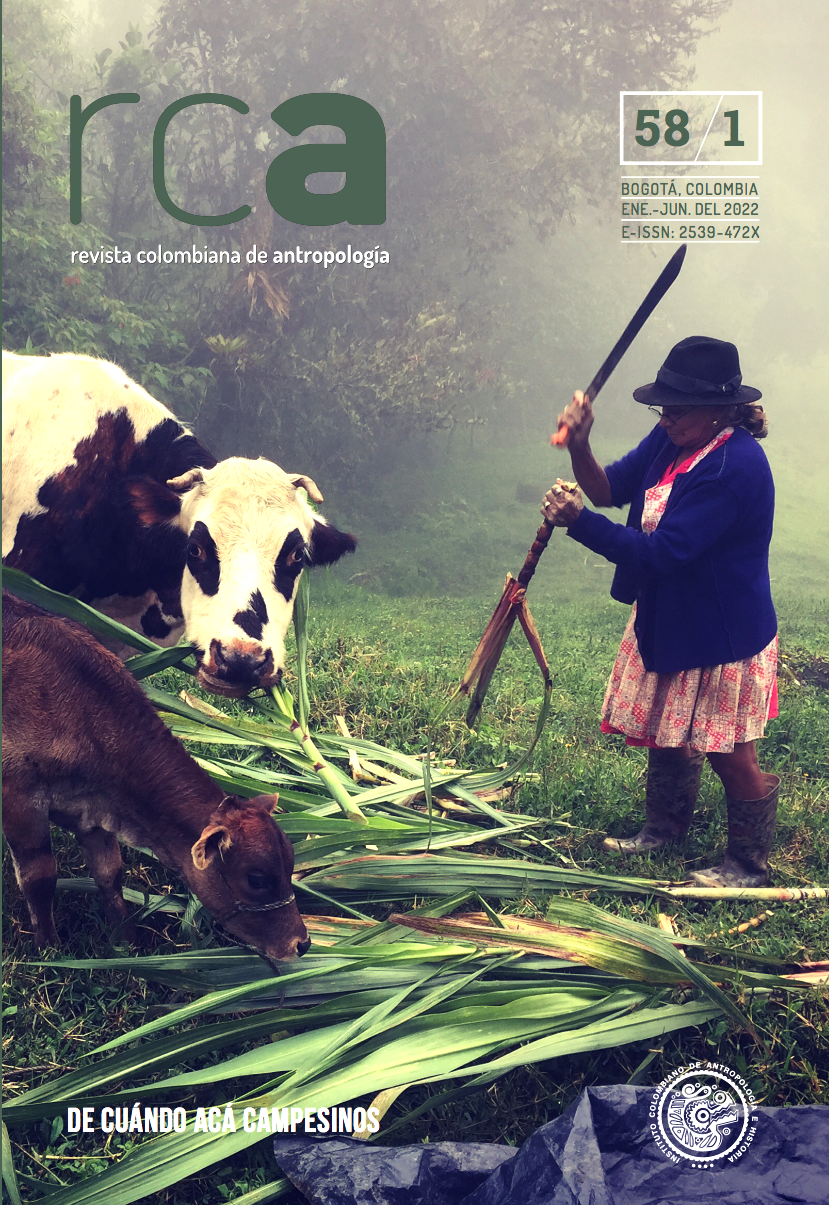“Los piratas son los que nos salvan”: informalidad, ritmos espaciotemporales y normatividad práctica en la (in)movilidad cotidiana de Cali “The pirates are the ones who save us”: informality, spatiotemporal rhythms, and practical normativity in daily (im)mobility in Cali
DOI:
https://doi.org/10.22380/2539472X.1534Keywords:
urban transport, temporality, constellations of mobility, gender, informal economy, public policyAbstract
In 2008, a mass transit system was inaugurated in the Colombian city of Cali that sought to generate a new culture of mobility and a new public order. Based on my ethnographic research with a group of women from the popular neighborhood
Ciudad de Córdoba, in this article I investigate the ways in which this mobility policy affected the spatiotemporal rhythms of these women in their daily commutes and how they re-signified their mobility
practices. To do so, I use the notions constellations of mobility (Cresswell 2010) and spatiotemporal rhythms (Buttimer 1976; Lefebvre 2004). My hypothesis is that the will of the local government to implement a new public order based on an excessively legalistic, static and inflexible vision of mobility led, paradoxically, to the reverberation and overflow of informal behaviors, as well as to the configuration
of a practical normativity oscillating between the legal and the illegal. These mobile behaviors have ultimately become a spontaneous force and resource for questioning, negotiating, and reconfiguring
this new social order.
Downloads
References
AlSayyad, Nezar. 2004. “Urban informality as a ‘new’ way of life”. En Urban informality: transnational perspectives from the Middle East, Latin America, and South Asia, editado por Ananya Roy y Nezar AlSayyad, 7-30. Oxford: Lexington Books.
Araujo, Kathya. 2009. Habitar lo social. Usos y abusos en la vida cotidiana en el Chile actual. Santiago de Chile: Lom Ediciones; Oxfam.
Auyero, Javier. 2013. Los pacientes del Estado. Buenos Aires: Eudeba.
—. 2015. “The politics of interpersonal violence in the urban periphery”. Current Anthropology 56 (S11): 169-179. https://doi.org/10.1086/681435
Avellaneda, Pau y Alejandra Lazo. 2011. “Aproximación a la movilidad cotidiana en la periferia pobre de dos ciudades latinoamericanas. Los casos de Lima y Santiago de Chile”. Revista Transporte y Territorio 4: 47-58. https://www.redalyc.org/articulo.oa?id=333027082004
Barrio Adentro. 2010. “Nuestro barrio, su historia” (blog). Comité de Juventudes Barrio Adentro, 28 de junio. http://juventudesjac.blogspot.com/2010/06/nuestro-barrio-su-historia.html
Buchely Ibarra, Lina Fernanda. 2015. Activismo burocrático. La construcción cotidiana del principio de legalidad. Bogotá: Ediciones Uniandes.
Buttimer, Anne. 1976. “Grasping the dynamism of lifeworld”. Annals of the Association of American Geographers 66 (2): 277-292. https://www.jstor.org/stable/2562470
Cali Cómo Vamos. 2017. “Movilidad. Objetivos del Desarrollo Sostenible [ODS] involucrados”. https://e6a9d32d-3a33-462e-9c91-cd6a04132224.filesusr.com/ugd/ba6905_1e30d3fc257044a3a8bb994afe39e3a3.pdf
“Cali inauguró el MIO”. 2008. El País, 15 de noviembre. http://historico.elpais.com.co/paisonline/calionline/notas/Noviembre152008/calimio.html
Castel, Robert. 2001. La metamorfosis de la cuestión social. Una crónica del salariado. Buenos Aires: Paidós.
Castro, María Victoria y Lina Fernanda Buchely Ibarra. 2016. “Mujer, espacio y poder: ciudad y transporte público como dispositivos de exclusión. Reflexiones desde la ciudad de Cali. Estudio de caso de los ‘motorratones’, carros piratas y usuarias del servicio en las comunas 15 y 18 de la ciudad de Cali”. Revista Estudios Socio-Jurídicos 18 (2): 227-252. https://doi.org/10.12804/esj18.02.2016.08
Cervero, Robert y Aaron Golub. 2007. “Informal transport: a global perspective”. Transport Policy 14 (6): 445-457. https://doi.org/10.1016/j.tranpol.2007.04.011
Crenshaw, Kimberle. 1991. “Mapping the margins: intersectionality, identity politics, and violence against women of color”. Stanford Law Review 43 (6): 1241-1299. https://doi.org/10.2307/1229039
Cresswell, Tim. 2010. “Towards a politics of mobility”. Environment and Planning D: Society and Space 28 (1): 17-31. https://doi.org/10.1068/d11407
De la Puente Lafoy, Patricio y Emilio Torres Rojas. 1992. “Características de la informalidad en el transporte de pasajeros en Santiago”. Revista de Sociología 12: 89-106. https://revistadesociologia.uchile.cl/index.php/RDS/article/view/27619
De Soto, Hernando. 1987. El otro sendero. Buenos Aires: Sudamericana.
Dunckel-Graglia, Amy. 2013. “Rosa, el nuevo color del feminismo: un análisis del transporte exclusivo para mujeres”. La Ventana 37: 148-176. http://revistalaventana.cucsh.udg.mx/index.php/LV/article/view/666
Gaviria, Jazmín. 2020. “Piratas en Ciudad Córdoba: motivos de la expansión del transporte informal en un barrio de Cali”. Tesis de grado en Sociología, Departamento de Ciencias Sociales, Universidad del Valle, Cali.
Glick Schiller, Nina y Noel B. Salazar. 2013. “Regimes of mobility across the globe”. Journal of Ethnic and Migration Studies 39 (2): 183-200. https://doi.org/10.1080/1369183X.2013.723253
Gómez Cárdenas, Carlos. 2011. “Políticas de transporte urbano: el caso del sistema masivo de transporte en el área metropolitana de Cali”. Revista de Economía & Administración 8 (1): 101-123. https://revistas.uao.edu.co/ojs/index.php/REYA/article/view/187
Gusfield, Joseph. 2014. La cultura de los problemas públicos: el mito del conductor alcoholizado versus la sociedad inocente. Buenos Aires: Siglo XXI.
Gutiérrez, Andrea. 2000. “La producción del transporte público en la metrópolis de Buenos Aires. Cambios recientes y tendencias futuras”. EURE XXVI (77). http://www.eure.cl/index.php/eure/article/view/1195
Hart, Keith. 1985. “The informal economy”. The Cambridge Journal of Anthropology 10 (2): 54-58. https://www.jstor.org/stable/23816368
Harvey, David. 1989. The condition of post-modernity. Oxford: Blackwell.
Highmore, Ben. 2005. Cityscapes: cultural readings in the material and symbolic city. Nueva York: Palgrave Macmillan.
Jirón Martínez, Paola. 2007. “Implicancias de género en las experiencias de movilidad cotidiana urbana en Santiago de Chile”. Revista Venezolana de Estudios de la Mujer 12 (29): 173-197. http://repositorio.uchile.cl/handle/2250/117827
Jouffe, Yves y Alejandra Lazo Corvalán. 2010. “Las prácticas cotidianas frente a los dispositivos de la movilidad. Aproximación política a la movilidad cotidiana de las poblaciones pobres periurbanas de Santiago de Chile”. EURE XXXVI (108): 29-47. http://www.eure.cl/index.php/eure/article/view/1403
Kessler, Gabriel. 2009. El sentimiento de inseguridad: sociología del temor al delito. Buenos Aires: Siglo XXI.
Khan, Nichola. 2016. “Immobility”. En Keywords of mobility. Critical Engagements, editado por Noel B. Salazar y Kiran Jayaram, 93-112. Nueva York; Oxford: Berghahn Books.
Kralich, Susana y Andrea Gutiérrez. 2007. “Más allá de la ‘informalidad’ en el transporte de pasajeros: reflexiones sobre los servicios de charters en al RMBA”. Lavboratorio. Revista de Estudios sobre Cambio Estructural y Desigualdad Social 20: 51-57. https://dialnet.unirioja.es/ejemplar/157017
Larkin, Brian. 2013. “The politics and poetics of infrastructure”. Annual Review of Anthropology 42: 327-43. https://doi.org/10.1146/annurev-anthro-092412-155522
Law, Robin. 1999. “Beyond ‘women and transport’: towards new geographies of gender and daily mobility”. Progress in Human Geography 23 (4): 567-588. https://doi.org/10.1191/030913299666161864
Lefebvre, Henri. 2004. Rythmanalysis: space, time, and everyday life. Londres: Continuum.
Lomnitz, Larissa A. 1975. Cómo sobreviven los marginados. Ciudad de México: Siglo XXI.
Mamani, Hernán Armando. 2016. “Transporte urbano e informal: quadros da Associação Nacional de Transportes Públicos”. Novos Cadernos NAEA 19 (3): 93-112. http://dx.doi.org/10.5801/ncn.v19i3.2524
Marinetti, Tommaso. 1909. “El futurismo”. https://arteydisegno.files.wordpress.com/2010/02/manifiesto-futurista-1909.pdf
Matza, David. 2014. Delincuencia y deriva. Cómo y por qué algunos jóvenes llegan a quebrantar la ley. Buenos Aires: Siglo XXI.
Mcfarlane, Colin. 2012. “Rethinking informality: politics, crisis, and the city”. Planning Theory & Practice 13 (1): 89-108. https://doi.org/10.1080/14649357.2012.649951
Muir, Sarah. 2017. “Recursive in/formality: time and ideology in a distributed monetary system”. Anuac 6 (2): 77-83. https://doi.org/10.7340/anuac2239-625X-3073
Rodríguez, Daniel A. y Erik Vergel Tovar. 2013. “Sistemas de transporte público masivo tipo BRT (Bus Rapid Transit) y su desarrollo urbano en América Latina”. Lincoln Institute of Land Policy, Land Lines. https://www.lincolninst.edu/publications/articles/sistemastransporte-publico-masivo-tipo-brt-bus-rapid-transit-desarrollo
Rosa, Hartmut. 2016. Alienación y aceleración. Hacia una teoría crítica de la temporalidad en la modernidad tardía. Madrid: Katz Editores.
Ruiz, Diana. 2012. “Experto asegura que el MIO ‘es un ejemplo para América Latina’”. El País, 17 de noviembre. https://www.elpais.com.co/cali/experto-asegura-que-el-mio-es-unejemplo-para-america-latina.html
Salazar Ferro, Pablo, Roger Behrens y Peter Wilkinson. 2013. “Hybrid urban transport systems in developing countries: portents and prospects”. Research in Transportation Economics 39 1:121-132. https://doi.org/10.1016/j.retrec.2012.06.004
Squire, Vicki y Jennifer Bagelman. 2012. “Taking not waiting: space, temporality and politics in the city of Sanctuary movement.” En Migration and citizenship: migrant activism and the politics of movement, editado por Peter Nyers y Kim Rygiel, 146-164. Nueva York: Routledge.
“Taxistas denuncian que la ‘piratería’ está desbordada en Cali”. 2014. El País, 25 de noviembre. https://www.elpais.com.co/cali/taxistas-denuncian-que-la-pirateria-esta-desbordada-en.html
Thompson, Edward Palmer. 1967. “Time, work-discipline, and industrial capitalism”. Past & Present 38: 56-97. http://www.jstor.org/stable/649749
Timms, Paul, Miles Tight y David Watling. 2014. “Imagineering mobility: constructing utopias for future urban transport”. Environment and Planning A: International Journal of Urban and Regional Research 46 (1): 78-93. https://doi.org/10.1068/a45669
Valdés, Diana. 2014. “‘Piratas de asfalto’: una caracterización del transporte informal y sus formas de organización colectiva en el oriente de Cali”. Tesis de grado en Sociología, Departamento de Ciencias Sociales, Universidad del Valle, Cali.
Varley, Ann. 2013. “Postcolonialising informality?”. Environment and Planning D: Society and Space 31: 4-22. https://doi.org/10.1068/d14410
Vega Centeno, Pablo. 2004. “Movilidad y vida cotidiana de mujeres de sector popular de Lima. Un análisis del testimonio de la señora Eufemia”. Anthropologica 22: 31-62. https://revistas.pucp.edu.pe/index.php/anthropologica/article/view/886
Virilo, Paul. 1997. La velocidad de liberación. Buenos Aires: Manantial.
Whitzman, Carolyn. 2013. “Women’s safety and everyday mobility”. En Building inclusive cities: women’s safety and the right to the city, editado por Carolyn Whitzman, Crystal Legacy,Caroline Andrew, Fran Klodawsky, Margaret Shaw y Kalpana Viswanath, 35-52. Londres; Nueva York: Routledge.
Yeh, Rihan. 2017. “La Racha: speed and violence in Tijuana”. Signs and Society 5 (S1): S53-S76. https://doi.org/10.1086/690088
Zigon, Jarrett. 2007. “Moral breakdown and the ethical demand: a theoretical framework for an anthropology of moralities”. Anthropological Theory 7 (2): 131-150. https://doi.org/10.117/1463499607077295
Zúñiga, Yuri. 2019. “Transporte informal y ciudad. Un análisis del mototaxismo en la Comuna 18 de Cali”. Tesis de grado en Sociología, Departamento de Ciencias Sociales, Universidad del Valle, Cali.
Downloads
Published
How to Cite
Issue
Section
License

This work is licensed under a Creative Commons Attribution-NonCommercial-NoDerivatives 4.0 International License.




















